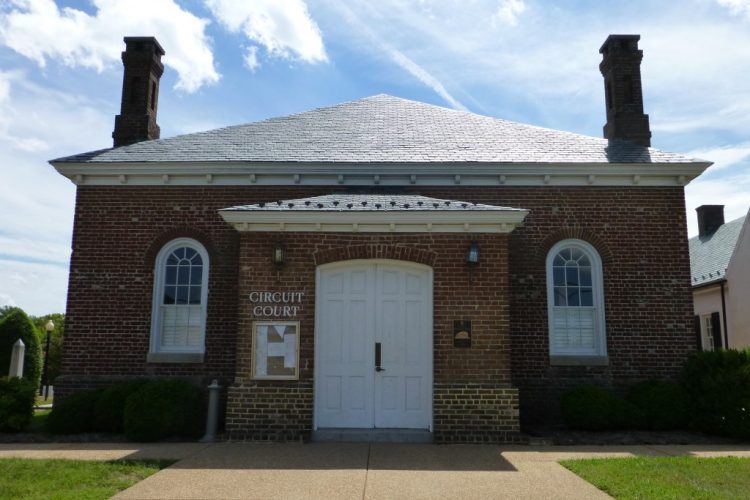February 20, 2015
The Basics of Civil Litigation Discovery
At some point after the filing of a lawsuit in Virginia Circuit Court, initial disputes over the sufficiency of the complaint are resolved. The parties are now on notice of their opponents’ claims and defenses. The process of getting to this point was the focus of my previous blog post. Contrary to what one sees on T.V. or movies, parties do not immediately proceed to going to trial. Instead, lawyers and their clients begin to prepare for trial in a period called “discovery.” Discovery involves finding out more facts about the case. This post provides an overview of the basics of civil litigation discovery, with a focus on its purposes and tools in real estate cases. Why is there such a lengthy process for this? Consider three purposes of discovery:
- Hoarding. Preventing one side or another from “hoarding” documents and information about the case to the unfair detriment of others. For example, in a case between different homeowners’ association factions over control of the board of directors, whoever happens to have access to the minutes, resolutions, notices, amendments, etc., kept by the association must provide them to the other.
- Surprises. Lawyers, as a lot, are attracted to springing surprises on their opponents at trial. However, it may be contrary to the principles of justice for one side to hand the other a large stack of documents they have never seen before during the trial and expect the witness questioning to be meaningful. Discovery can mitigate unfair surprise.
- Effectiveness of Trial. The public places greater confidence in trial results that are based on documents and facts rather than the decisions made in the absence of existing evidence.
The methods of discovery are more formal than the fact gathering conducted outside of litigation. Informal investigation includes researching the documents and information within one’s control, talking to friendly witnesses, checking what is publicly available or that one’s bank can provide. Usually this doesn’t answer all questions. So what are the available forms of civil discovery? There are quite a few. The most useful in real estate and construction cases in Virginia circuit court are:
- Document Requests. The rules allow a party to request in writing an opponent’s documents. A party seeking production of documents must send a written request. The responding party then has 21 days in which to respond as to documents within their possession, custody or control. In large cases it usually takes significantly longer than 21 days to resolve a document request. Reviewing the relevant documents of one’s opponent is a central element of trial preparation. Contracts and other documents created before the dispute cannot, absent forgery, be changed to adapt to someone’s current story. When the judge or jury goes to make determinations of facts, the credibility of the parties and the key documents carry great weight. If a party fails to produce a document requested in discovery, they are not normally allowed to use it as an exhibit at trial. The documents of a third-party can be requested by serving them with a subpoena duces tecum.
- Interrogatories. Information sought may not necessarily be reflected in a document. In discovery, a party may submit written interrogatories to another party, seeking answers to specific questions. For example, a party may inquire into the factual support for their opponent’s claims or defenses. Parties usually ask for disclosure of all persons having knowledge about the facts of the case. Interrogatories are also a good tool for finding out about expert testimony that one’s opponent may present at trial. The answering party must respond within 21 days. The answers must be signed by a party under oath or affirmation.
- Requests for Admissions. Last August, I posted an article about the role of a party’s admissions in a federal trial in Maryland. In that case, a lawyer made an oral admission in a closing argument. His opponent did not make a motion to have the admission deemed binding before the jury went to deliberate. The jury made a decision contrary to the admission. The jury verdict ignoring the admission survived post-trial motions and appeal. Party admissions can be requested in discovery before they come out at trial. Parties are entitled to submit to the opponent formal, written requests for admission. The 21 day deadline applies here as well. Admitted responses are binding. These can be useful for resolving uncontested matters so that the trial can focus on what’s disputed.
- Depositions. How will a party or witness react to a line of questions at trial? Does a party or witness know something that can be useful to preparing one’s own case? In discovery, a party may take oral depositions of parties, experts or other witnesses. The deposition usually occurs at a law office. The parties, the lawyers and the witness meet in a conference room with a court reporter. The court reporter places the witness under oath, and then records all of the lawyers’ questions, objections and witness answers. Depositions of parties and experts are an important part of pretrial discovery in large cases.
- View of Real Estate. In many real estate or construction cases, the most significant piece of evidence is the building or land itself. If ordered, the jury travels to the property to view it as evidence. More commonly, the appearance of property is put into evidence by photographs or video. A party not in possession or control of the real estate is entitled to view it. This can be an effective way of expanding one’s knowledge about the case.
Not all of these tools will need to be employed in every case. In addition to these forms of discovery, there are common areas where parties dispute over whether the discovery has been properly sought or provided. These are usually the subject of objections and motions:
- Relevance. Discovery cannot be used to explore any and every topic. The requests must explore relevant, admissible evidence or information that is reasonably calculated to lead to admissible evidence. Although not unlimited, the scope of discovery is broad.
- Confidentiality. A party may have confidentiality concerns about turning over documents or information. These concerns can be addressed by a protective order regulating the use and disposition of confidential documents or other information.
- Privileges to Withhold. Frequently attorneys will interpose objections to discovery requests. One justification for withholding documents is the attorney-client privilege. Communications between an attorney and his client are not subject to discovery. Despite the apparent simplicity of this concept, disputes over assertion of the attorney-client privilege are a frequent source of discovery disputes. There are other privilege and objections that are applicable in certain situations.
- Spoliation. In the age of computers, e-mails, text messages, computer files and other electronic data are easily created and easily deleted. Once litigation is threatened or pending, parties and witnesses should take action to preserve evidence, including electronically stored information for potential use in the lawsuit.
- Motions to Compel. Lawyers must make reasonable efforts to resolve disputes over the legitimacy of objections, the sufficiency of responses and other discovery disputes without putting it before a judge. When disputes cannot be resolved, typically one party will bring a motion to compel discovery against the other.
- Sanctions. The failure to obey discovery orders can subject a party to a variety of sanctions, including awards of attorney’s fees, dismissal of claims or defenses, exclusion of witnesses and other punishments.
By better understanding the basics of civil litigation discovery, one can adopt strategies that make better use of time, energy and resources pre-trial. Implementing discovery strategies proper to the needs and circumstances of the case pave the way towards a favorable result.
February 12, 2015
The Beginning of a Virginia Circuit Court Case
Many people will never be party to a lawsuit that goes to trial. For those that do, the first time may be the only time. Being a party to a Virginia circuit court civil case requires significant time, focus and resources for what may be several months or longer. What should a party expect from the beginning of a Virginia circuit court case? Because of the commitment required, parties to a lawsuit should familiarize themselves with the basics. This article is the first installment in a series providing a basic overview of Virginia circuit court civil cases. While the circumstances and details of each case are unique, the rules of court provide a basic outline of what to expect.
Pre-Lawsuit Negotiations: Before a lawsuit is filed, the parties and their attorneys usually communicate in efforts to achieve desired results without the necessity of a lawsuit. They exchange emails, demand letters, settlement offers and other correspondence articulating their interests, position and requirements. Why engage in this process if there already are grounds for a lawsuit? In the facts of many cases, there is a reasonable likelihood that the case can be settled without the necessity of filing suit. Not every case that ought to settle in fact resolves without filing suit. However, once suit is filed, the parties will be required to conduct the case in addition to engaging in any desired settlement negotiations. Often it is worthwhile to first see if things can be negotiated.
Filing the Complaint: If settlement negotiations don’t work, a party’s first step towards obtaining a judgment may be to file a complaint at the circuit court clerk’s office. In real estate and construction cases, this is usually done at the courthouse for the city or county where the property is located. Most real estate or construction cases are brought in Circuit Court. However, if the amount in controversy is $25,000.00 or less, the case will probably be brought in General District Court. Alternatively, some cases are brought in federal court.
To begin the case properly, the plaintiff’s best interests are served by investigating and analyzing the case with the lawyer. The complaint should include the proper parties with their correct names. The claims (e.g., breach of contract, breach of warranty, fraud, etc.) should be carefully considered and supported by sufficient factual allegations. The remedies (e.g., money judgment, declaration of rights, etc.) requested to the Court should be clear and supported by the claims. The parties defending the lawsuit can be expected to attack the complaint in whatever way they can. Making the complaint as strong as reasonably possible positions the plaintiff to have a greater likelihood of obtaining a favorable result in court or settlement. The plaintiff normally bears the burden of proof for the claims in the complaint. Parties should avoid simply putting some allegations together that merely forces the other side to respond. Time and focus spent on the complaint may prevent more time unnecessarily being spent strengthening or disputing over a claim later.
Service of Process: A lawsuit cannot proceed unless the defendants are formally put on notice. Normally this consists of having a sheriff’s deputy or private process server going out to each defendant’s house to serve them. There are several alternatives to direct hand delivery of the complaint on the defendant that may apply. Usually it takes a few days for the court personnel to process the paperwork. If the lawyers for the parties are already introduced, often the attorney will provide the defendants with a courtesy copy of the complaint before it is served.
Defendant’s Initial Response: Once the defendant is served, he normally has 21 days in which to respond. Failure to respond in a timely manner or obtain an extension can result in that party falling into default. Falling into default can result in significant waiver of rights to defend the lawsuit and possible entry of default judgment. Usually, defendants respond initially to complaints by filing a “demurrer” or some other motion designed to have the lawsuit dismissed. In the Virginia circuit courts, defendants often make substantial efforts in these early demurrers and motions. Unlike some other states, the defendant’s ability to get a case dismissed on a later pre-trial motion is limited in Virginia state courts. Since the plaintiff bears the burden of proving the allegations and generally upholding the legitimacy of the lawsuit, there are many possible grounds for a defendant to seek dismissal. What is a demurrer? At this stage the defendant usually cannot successfully challenge the truth of the facts asserted in the complaint. Instead, the demurrers typically argue that, for whatever reason, the complaint is not legally sufficient and must be revised or abandoned. For example, a plaintiff may allege various forms of wrongdoing and damages suffered. However, if a claim fails to properly articulate a causal connection between the wrongful conduct and the damages suffered, the defendant will probably argue that it is not legally sufficient. The demurrer or motion to dismiss may require a court hearing where the attorneys will argue before a judge over the sufficiency of the lawsuit. The parties themselves are usually not required to attend these hearings but may do so if they wish.
Defendant’s Answer and Affirmative Defenses: At the end of this initial motions practice phase, the defendants are usually left with claims that have survived and must be responded to directly. This is done by filing an answer containing numbered paragraphs responding directly to those in the complaint as admitted, denied or whatever other response is appropriate. In the same document, the defendants will also identify their affirmative defenses. For example, the defendant may assert fraud, that the plaintiff waived her rights by taking too long to file suit, or other defenses. Some affirmative defenses must be put with the answer to avoid being waived.
Additional Claims: A defendant may have a claim against the plaintiff, another defendant or a third party that may be related to the facts of the case. This initial response phase is the normal time for such claims to be asserted. A counter-claim, cross-claim or claim against a third party is in many respects treated like a separate lawsuit that will go to trial with the initial lawsuit because of the common factual issues.
Scheduling Orders and Trial Dates: Around this time the court will set the trial date. A party should provide her attorney with dates to avoid (vacation, travel, etc.) for trial. Additionally the attorney and client will discuss whether a trial by or without a jury should be requested. When the attorneys set the case for trial, the court may enter a scheduling order setting certain deadlines for the progress of the case. Once the trial date is set, the attorneys, parties and witnesses should reserve the trial dates on their calendars.
There is a lot of activity that goes on in a Virginia circuit court case before the parties give their own personal testimony. In the next installment in this series, I will provide an overview for the discovery process, where each side requests testimony, property viewings, documents and information from their opponents and third parties. The facts and circumstances of each case are different and may require additional procedures or other variations from the outline provided above. If you have a real estate or construction claim against another party, discuss the matter with a qualified attorney to avoid unnecessary waiver of any rights. If you have been made a defendant to a lawsuit, consult with an attorney admitted to practice before the court where the suit is filed to avoid falling into default or other waiver of rights.
February 14, 2014
George Clooney, Ken Shigley & Legal Case Selection
“Accept only cases you would be willing to take to trial.” Ken Shigley, past president of the Georgia Bar, included this in his 10 Resolutions for Trial Lawyers in 2014. There are millions of ways that lawyers convince themselves to accept a questionable case:
- “The case might lead to larger, stronger cases in the future.”
- “I’ll settle it if it seems weaker when I learn more of the details.”
- “The client seems to have an ability to pay.”
- “I don’t normally take these types of cases, but any generalist could handle it.”
- “I’ll withdraw if the client relationship deteriorates.”
Every client with a meritorious case deserves a lawyer committed to zealous advocacy. To the lawyer, the case represents an investment of time, reputation and firm resources. The larger the case, the greater the professional investment. Unfortunately, in a competitive marketplace, lawyers frequently feel pressure to accept cases that aren’t a good fit for them. However, it might be easier to agree to take a weak case than to favorably withdraw or settle it later.
In many ways, Shigley’s #1 Resolution applies to clients as well. A client may go to a lawyer with a problem. The lawyer may respond with questions, insights and a litigation proposal not anticipated by the client. Moving forward with a real estate lawsuit is usually a major decision, requiring substantial investment of time and resources that tends to escalate over the months or years prior to resolution. An expert faces the same challenges.
How does a client, lawyer or expert know whether she is willing to commit to take a case through trial (and beyond, if necessary)? This is particularly important in real estate cases where the remedy may involve more than an award of damages to one side or the other. Present and future property interests may be at stake.
In the movie theater, lawyers like fixer “Michael Clayton” or divorce attorney Miles Massey from “Intolerable Cruelty” have glib answers. George Clooney, the actor portraying both of these fictional attorneys, recently gave an interview with the Washington Post to promote his latest film, “The Monuments Men.” Ann Hornaday, February 6, 2014, “George Clooney Uses His Star Power to Keep Part of Old Hollywood Alive.” Although Ms. Hornaday seems too glowing at times in praise of Clooney, I agree with her basic assessment:
“There might not be another actor alive who so thoroughly personifies movie stardom, or deploys it so adroitly — as commodity, means of production and public trust.”
In the interview, Clooney describes how he learned the hard way which movie roles to accept or decline.
1. Choose the “Screenplay,” Not Just a Role:
In 1997, Clooney starred in “Batman & Robin,” an admittedly disastrous installment in an otherwise successful franchise: “Until [Batman & Robin], I had just been an actor . . . I had only been an actor in a TV series, and then I got ‘E.R.'” E.R. made Clooney a household name. Batman set his reputation back:
“And after I got killed for ‘Batman & Robin,’ I realized I’m not going to be held responsible just for the part anymore, I’m going to be held responsible for the movie. And literally, I just stopped. And I said, It now has to be only screenplay. Because you cannot make a good film from a bad screenplay.”
Prior to Batman, he simply looked at the part offered to him in a film. Batman taught him how being a leader or a star requires a larger commitment.
A lawyer must present his client’s case compellingly for the jury at trial. Preparing for trial requires roles: client representative, witnesses, testifying experts, jury consultants, first-chair litigator, second-chair litigator, legal assistant, general counsel, insurance counsel, and so on. The litigation equivalent to a screenplay is the outline containing all of the arguments, statements and examination questions. Unlike movies and T.V., a lawyer cannot script the behavior of any actor in the drama other than himself. Neither the lawyer or the client have a complete trial outline to go over in the initial client interview. At that point, the lawyer may receive some anticipated witness testimony and exhibit documents, but probably not all of the facts and issues. The initial case evaluation is extremely important. There is no better way to make a preliminary evaluation than in an opening memorandum.
The challenges of initial case evaluation illustrate the value of a specialized litigator to the client. Preparing a detailed proposal or opening memorandum is a feasible time investment to a professional in a niche. Reducing the initial case evaluation to a written summary allows the lawyer and client to visualize the proposed role within the larger “screenplay” and the likelihood of a win-win. BIind acceptance of larger roles in big budget matters may lead to a “Batman & Robin” result.
2. Leading a Team Through the Darkness:
Law schools do not focus on leadership and management in the core curriculum. Law firms typically structure around collegial authority, originations and billable hours. How can lawyers become great leaders and team-builders?
In addition to choosing films based on the screenplay, Clooney forged relationships with great directors such as the Coen brothers and Steven Soderbergh. In 2006, Clooney and his partners formed Smokehouse Pictures for the purpose of making movies missing from Hollywood’s contemporary repertoire. “We want it to be low-budget, dark, screwy…..We like that world a lot.” These personnel decisions may not be based on the easiest way to fill roles. Nor are they dependent upon celebrity and institutional relationships. Creative partnerships and budgets lay the groundwork for success.
3. The Lawyer’s Niche and Initial Assessment:
What can be learned from Ken Shipley and George Clooney’s resolutions? Neither of them say, “Only accept roles that guarantee or promise success.” The decision to accept or decline a role hinges on commitment to the project and others, especially the client. A litigator niched in a particular jurisdiction and practice area is best positioned to make this commitment. He is more prepared to develop a preliminary “screenplay” and draw from a network of other professionals.
photo credit: Josh Jensen via photopin cc



